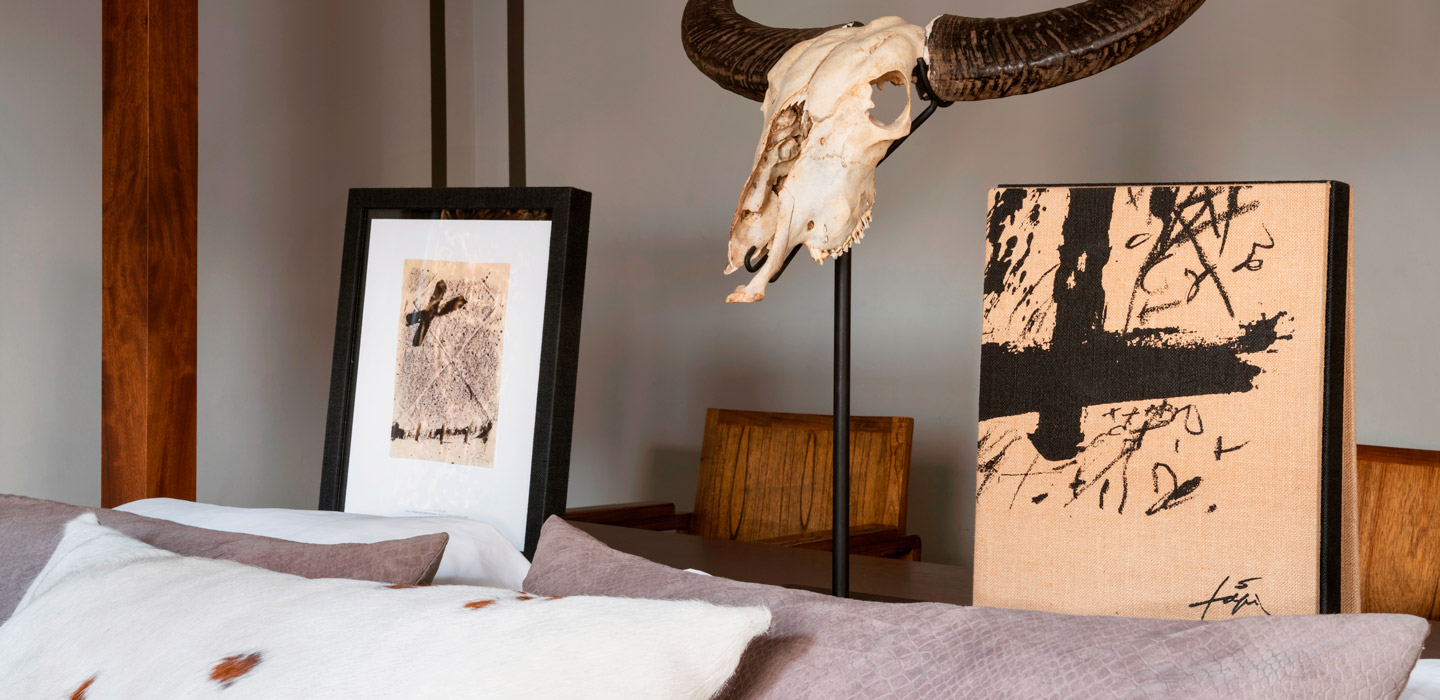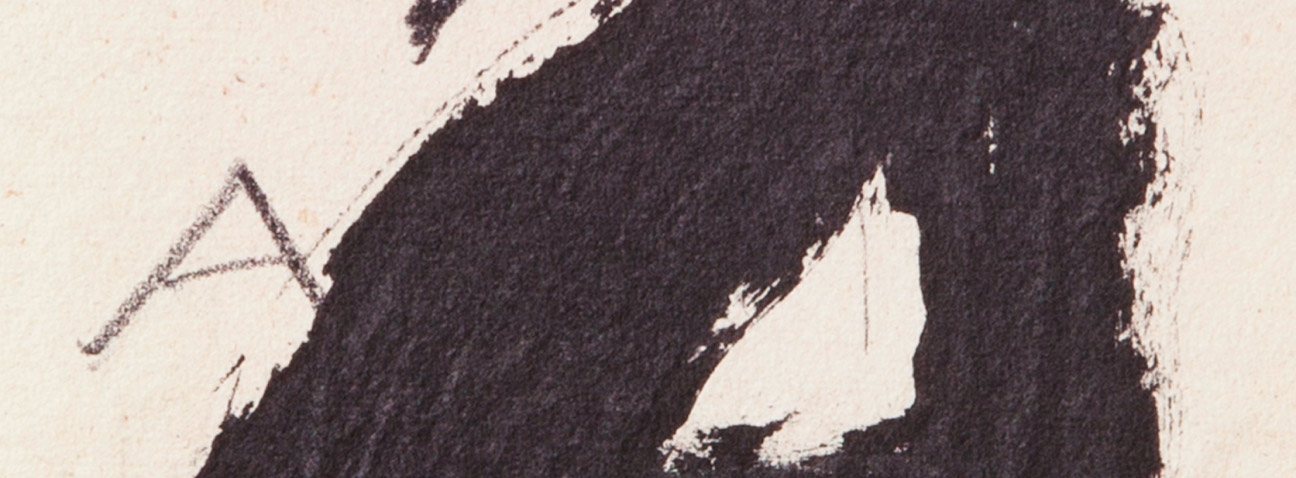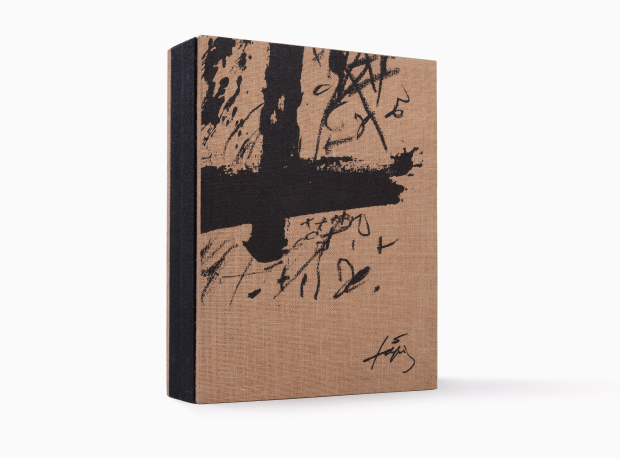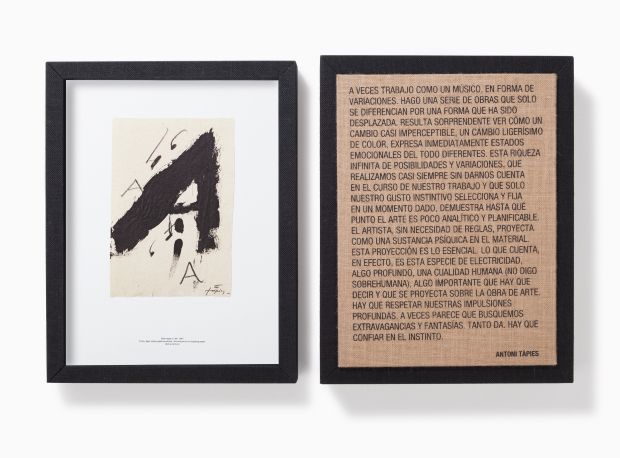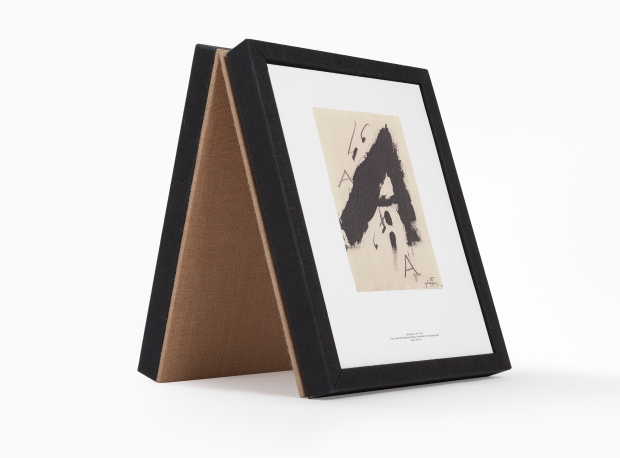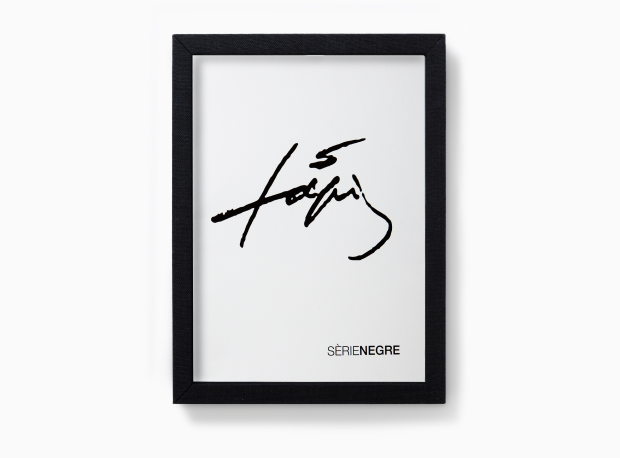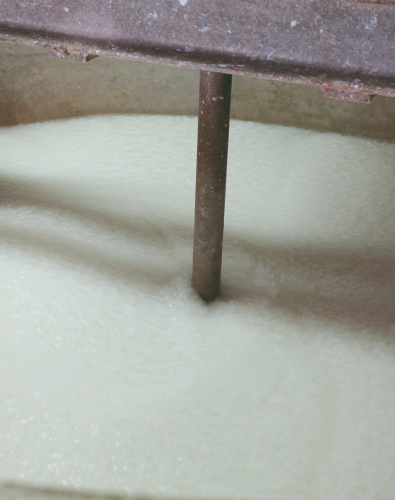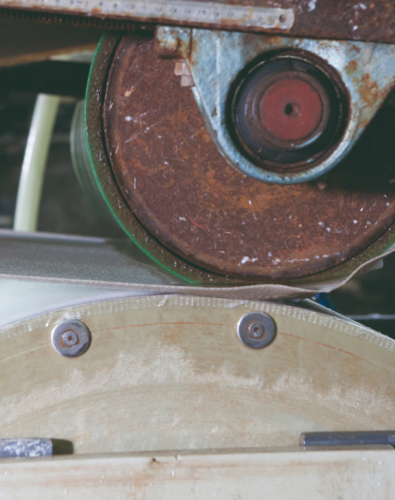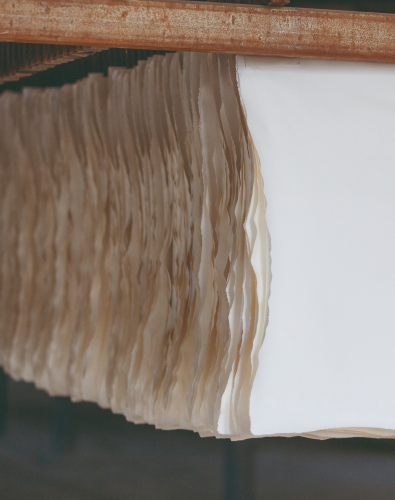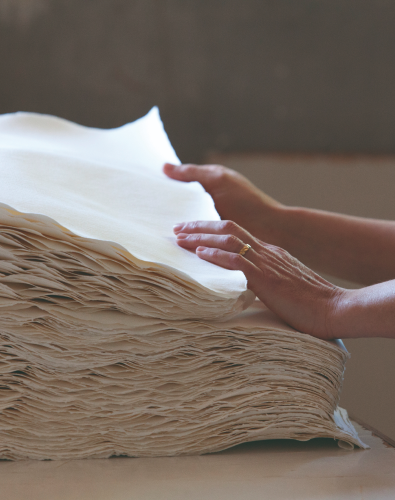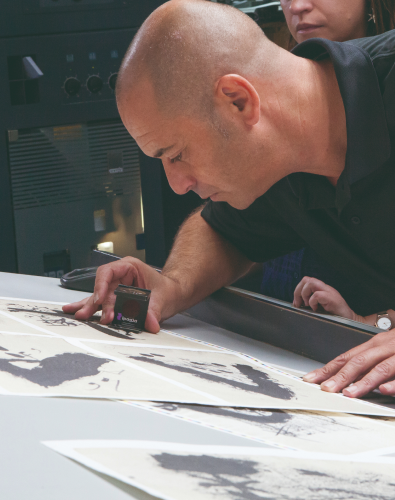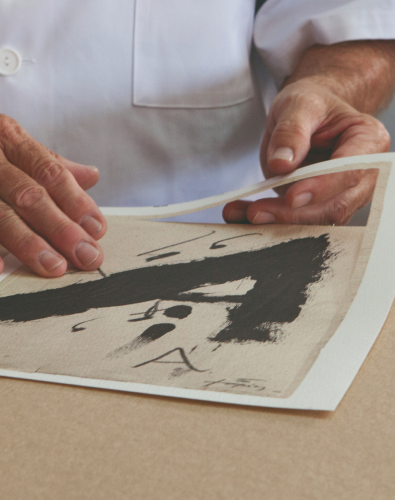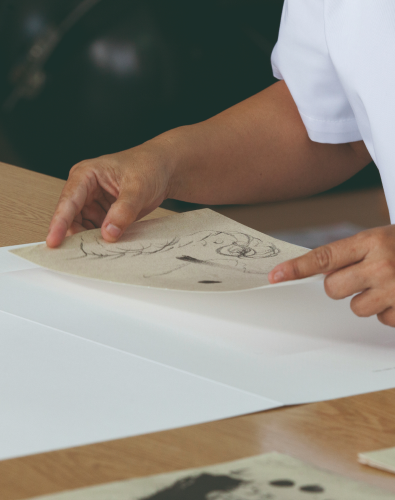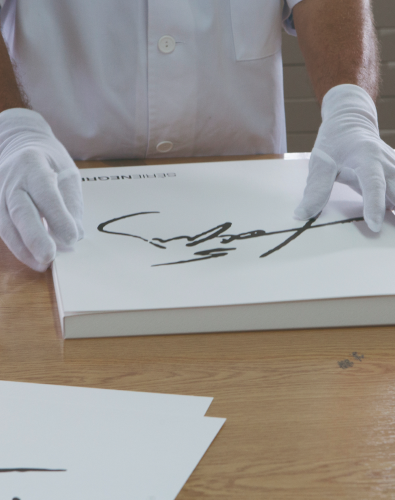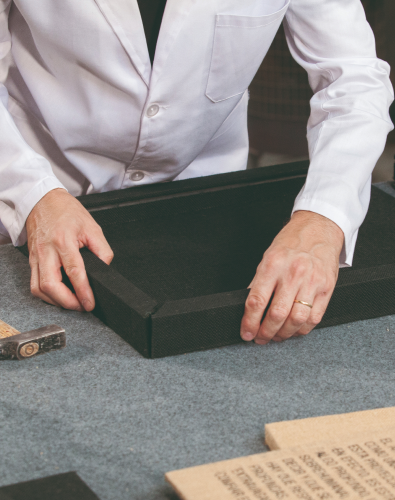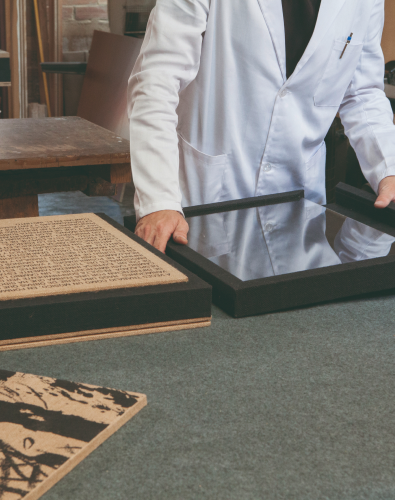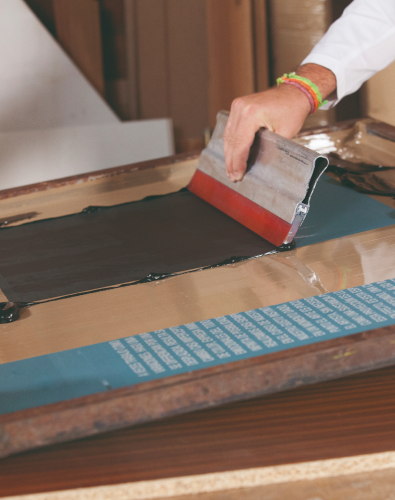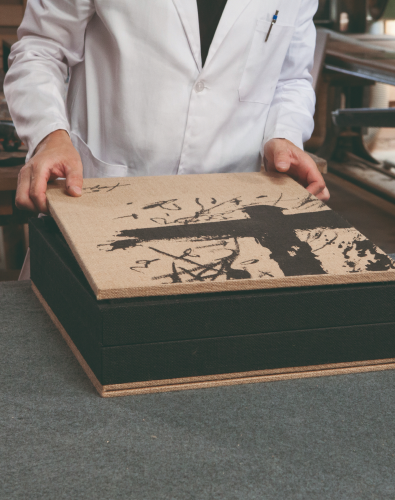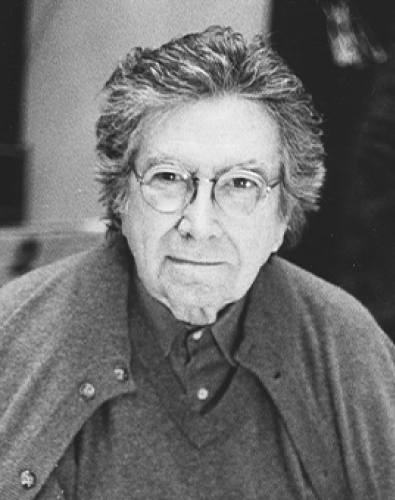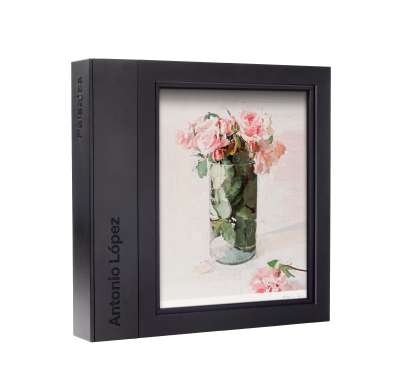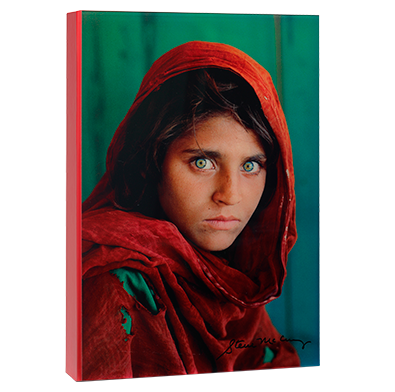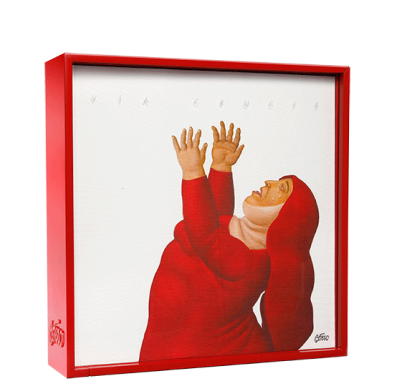On the occasion of the 50th anniversary of the creation of the Sèrie Negre, ARTIKA and the Fundació Antoni Tàpies have reproduced the 15 drawings that make up the complete series.
The artist made in 1967 on laid paper, a support that allowed him, with nuances and reliefs, to highlight the real protagonist: the color black.
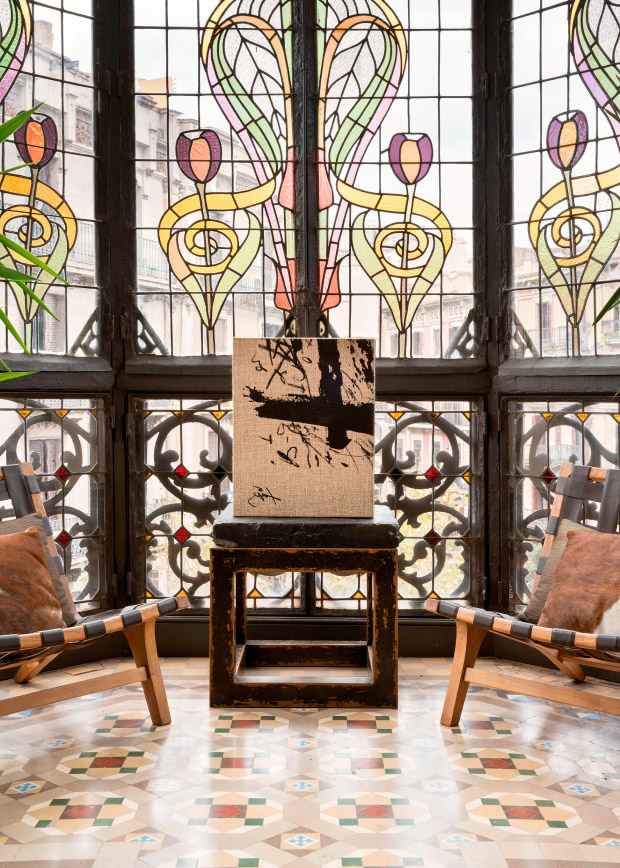
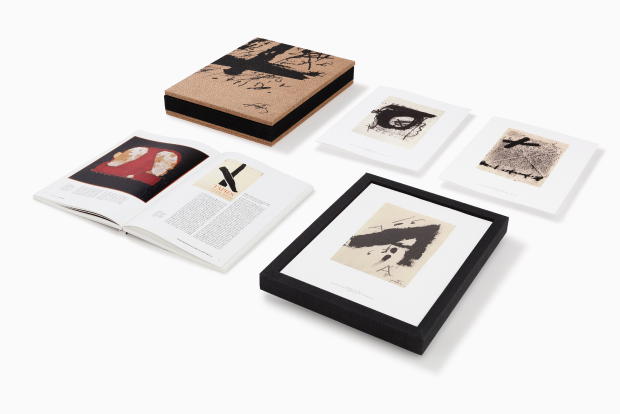
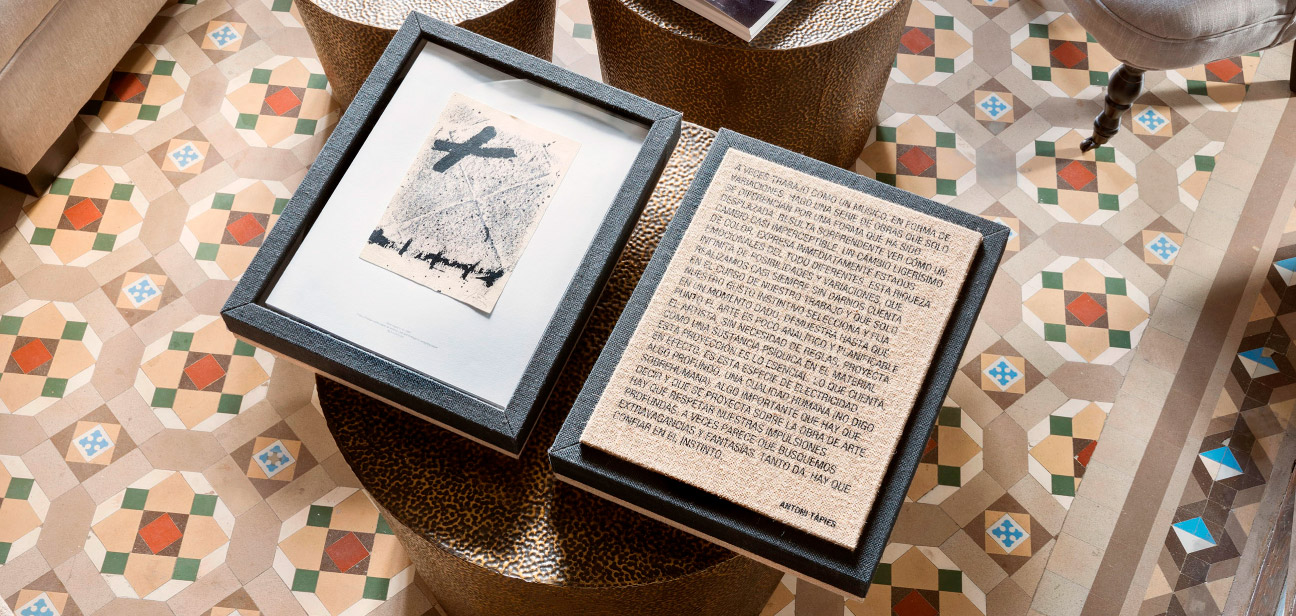
All the plates have been printed on handmade paper of the highest quality, each one of them is numbered and includes the seal of the Fundació.
Presented in diptych form, together they form the Art Book of this exclusive edition, limited to 998 copies in Arabic numeration and 298 in Roman numeration.
The Study Book, in a bilingual Spanish-English edition, takes a journey through the life and work of the artist by Antoni Tàpies Barba, son of the artist; Xavier Antich, president of the Board of Trustees of the Fundació Antoni Tàpies; and the art historian Pedro de Llano, who comments on all the drawings, one by one.
The case, which houses all the parts of the work, also becomes a display for the drawings.
TECHNICAL SPECIFICATIONS
CASE
- Format: 41 x 53 x 13
- Two parts joined by magnets: one with the Art Book, covered with a laminated glass, independent frame for hanging. The second includes a Study Book with a cover in ecru burlap.
- Lining: burlap fabric in ecru and black.
- Empty weight: 14.5 kg.
STUDY BOOK
- Format: 32 x 44 cm
- Number of pages: 168
- Paper: Tatami White, 170 g
- Printing: 4/4 inks
- Binding: stitching and paperback
- Covers: double 350 g cardboard (cardboard laminated on the front and back)
- Cover printing: four-color printed lining
- Bilingual edition: Spanish and English
DIPTYCHS AND FOLDER
- 18 diptychs format: 34 x 46
- Folder format: 34,5 x 46,5
- Paper: Tintoretto gesso 250 g (diptychs) and 350 g (folder)
- Printing: front and back in one ink only (black)
PRODUCTION PROCESS
OTHER COLLECTIONS
REQUEST INFORMATION
We will inform you about ARTIKA's works and news.
